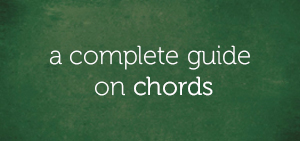This lesson will be short and sweet.
There are many ways to play chords.
You can play them exactly as written in root position, first, and second inversion (e.g. – C major in root [C + E + G], in first inversion [E + G + C], in second inversion [G + C + E], etc.).
Or you can choose to be more “stylish” with your voicings. One of the ways you can switch things up is by understanding open voicings.
This is when you spread out the notes of a chord.
For example, instead of playing C major in root position as C + E + G:
You switch the “E” and “G”, thus giving you C + G + E
It’s like you’ve skipped the normal note in line, only to play it higher up.
Here’s an easy way to accomplish this with all triads (3-toned chords).
Simple rule: Just swap your second and third note.
That’s it.
If you’re working with triads, there will always be 3 notes. Don’t touch the first note. Just swap your second note for your third note and you’re done.
C + E + G becomes C + G+ E (like in our example above).
What about C major in first inversion (E + G + C). What happens when you swap the 2nd and 3rd notes?
Answer: E + C + G
What does C major in second inversion become (G + C + E)?
Answer: G + E + C
Imagine doing that for major 7 chords.
For example, C major 7 (C + E + G + B):
This time, swap the last two notes: C + E + B + G
You can really take this concept far.
Told you it would be quick!
Until next time –







Comments on this entry are closed.